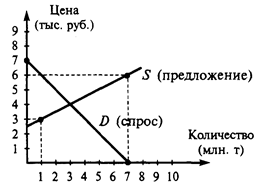Institutional foundations of economic systems. The economic theory of property rights.
An economic system is the structure of production, allocation of economic inputs, distribution of economic outputs, and consumption of goods and services in an economy. It is a set of institutions and their social relations. Alternatively, it is the set of principles and techniques by which problems of economics are addressed, such as the economic problem of scarcity through allocation of finite productive resources. An economic system can be defined as a "set of methods and standards by which a society decides and organizes the allocation of limited economic resources to satisfy unlimited human wants; how a society goes about transforming the natural world into material goods. Alternatively, 'economic' refers to the organizational arrangements and process through which a society makes its production and consumption decisions. In creating and modifying its economic system, each society chooses among alternative objectives and alternative decision modes. Many objectives may be seen as desirable, like efficiency, growth, liberty, and equality. The basic and general economic systems are: · Market economy (the basis for several "hands off" systems, such as pure capitalism) · Mixed economy (a compromising system that incorporates some aspects of the market approach as well as some aspects of the planned approach) · Planned economy (the basis for several "hands on" systems, such as state socialism) · Traditional economy (a generic term for older economic systems) · Participatory economics (a system where the production and distribution of goods is guided by public participation) · Gift economy (where an exchange is made without any explicit agreement for immediate or future rewards) · Barter economy (where goods and services are directly exchanged for other goods or services) Economic systems can be divided by the way they allocate economic inputs (the means of production) and how they make decisions regarding the use of inputs. The two major systems are Capitalism and Socialism. In a capitalist economic system, production is carried out to maximize private profit, decisions regarding investment and the use of the means of production are determined by competing business owners in the marketplace; production is based on the process of capital accumulation. The means of production are owned primarily by private enterprises. This is the most widely used system of economics, but has encountered much resistance and criticism due to the strength of social division in countries based on Capitalism. In a socialist economic system, production is carried out to directly satisfy economic demand by producing goods and services for use; decisions regarding the use of the means of production are adjusted to satisfy economic demand based and investment (control over the surplus value) is made through a mechanism of inclusive collective decision-making. The means of production are either publicly owned, or are owned by the workers cooperatively. This is the less popular system of economics, due to it's vulnerability to exploitation as a result of the concept of human nature and greed, but no valid criticisms on the system itself have been found (All criticisms are based on what results from the application of greed to the system).
|




